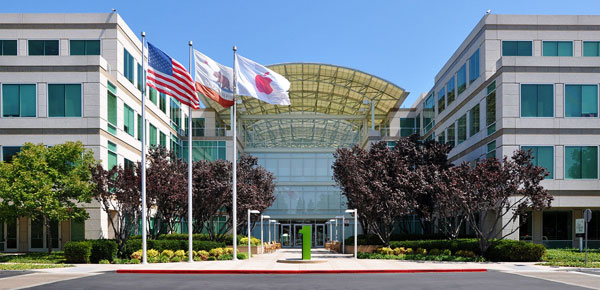Apple stunned Wall Street Tuesday afternoon, when it reported fiscal Q1 earnings that set new quarterly unit and revenue records in key product segments, and its highest-ever earnings per share.
Apple CEO Tim Cook told analysts that the company set all-time revenue and unit records for its iPhone and Apple Watch brands, all-time revenue records for its Mac and Services businesses, and all-time revenue records for four of its five geographic sectors.
The company sold a record 78.3 million iPhones during the quarter, up 5 percent from the year-ago period.
Earnings rose to US$3.36 a share for the quarter ended Dec. 31, compared with $3.28 in the year ago quarter, beating the company’s own guidance and Wall Street analyst estimates, and setting a new record.
Revenue during the quarter reached $78.4 billion, compared with revenue of $75.9 billion in the year-ago quarter, exceeding the company’s guidance range and also setting a new record, Cook noted.
High Phone
“iPhone had a tremendous quarter thanks to exceptional demand that beat our own internal expectations,” Cook told analysts.
The company had especially strong demand for its dual camera iPhone 7 Plus, which accounted for a higher portion of product demand for plus models than the company previously has seen, he said.
Demand exceeded supply during the quarter; however, it came back into balance by January.
Apple’s Services business reported $7.2 billion in revenue, its best ever, up 18 percent from a year ago. The App Store had its best month ever in December, with $3 billion in purchases.
The company’s International operations accounted for 64 percent of quarterly revenue, with new all-time records set in most developed and emerging markets, according to CFO Luca Maestri.
However, business in Greater China was down 12 percent, and mainland China was even with a prior record number, slowed by the strong U.S. dollar, slower inventory growth and other factors.
Apple forecast fiscal second quarter revenue of between $51.5 billion and $53.5 billion on gross margins of 38-39 percent. Operating expenses are expected to be between $6.5 billion and $6.6 billion, while the tax rate is expected to be 26 percent.
One Hit Wonder?
Apple outdid itself after three consecutive quarters of revenue decline, raising speculation over whether it was a one-time phenomenon or a trend.
“This is good news for Apple, but I have to wonder if it would have been this good without a Samsung Galaxy meltdown like we experienced over the past several months,” said telecom analyst Jeff Kagan.
“This may have scared plenty of Samsung users to Apple, at least for the short term,” he told the E-Commerce Times.
“Apple was no doubt able to capitalize on the problems that Samsung had with the Note 7 recall,” said Todd Day, senior industry analyst for mobile & wireless communications at Frost & Sullivan.
“With Samsung being the No. 1 seller of smartphones, any churn the company has in customers is likely to push a majority of those customers over to Apple,” he told the E-Commerce Times.
Apple may have been helped by the Samsung Note 7 recall, but it’s unlikely that it was a major driving factor, said Jitesh Ubrani, senior research analyst for worldwide mobile device trackers at IDC.
Apple Watch
Cook, who late last year criticized IDC’s report about Apple Watch market share numbers, said holiday demand for the product was so strong that the company could not meet it.
The Apple Watch is the best selling smartwatch in the world, he added, with the highest customer satisfaction in the category by a wide margin.
The success of the company’s watch underscores its ability to learn from past mistakes, said IDC’s Ubrani told the E-Commerce Times.
“A new UI, new watch, GPS, and most importantly a lower starting price have gone a long way in enticing new buyers,” he said.
Apple also has made inroads in the commercial segment for the watch, which will add to its success, Ubrani added.
The Apple Watch may be the leader of the pack in its category, but it’s not a major driver of the company’s financial success, suggested Frost’s Day.
“Wearable sales aren’t as strong as expected,” he pointed out, but “those sales still make up a much smaller percentage of Apple’s overall market sales and revenue.”
iPhone Pricing
“Apple’s impressive performance was directly tied to the strong performance of iPhone 7 Plus,” said Brent Iadarola, mobile and wireless communications vice president at Frost & Sullivan.
“Strong Phone 7 Plus sales provided a significant boost to the overall average selling price of the iPhone,” he told the E-Commerce Times.
“As price points of Android devices continue to decline, Apple has demonstrated the ability to maintain, and even increase, their iPhone ASP — to $695 in the last quarter,” Iadarola pointed out.
“Innovative pricing options continue to change the landscape for smartphones in North America, in particular, as most major carriers have introduced lease or installment purchasing options,” he explained. “This contributed to a surge in the adoption of higher-priced mobile devices in the region.”























































Social Media
See all Social Media